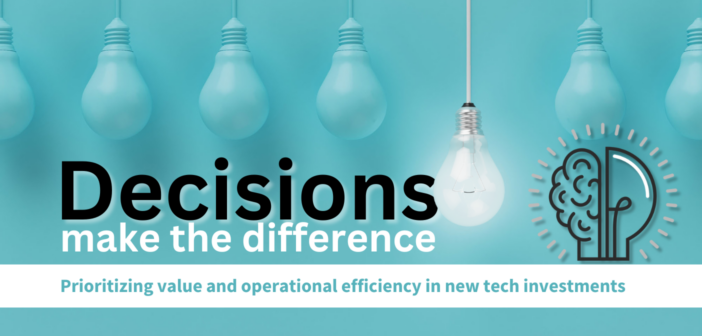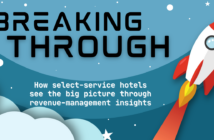Prioritizing value and operational efficiency in new tech investments
Investing in new technology can feel overwhelming. Too often, a desired upgrade in one area – faster Wi-Fi or new property management software (PMS) – can render other infrastructure or software obsolete due to incompatibilities. In addition, many select-service hotels put off upgrading their internet and telecoms systems to avoid capital expenditures.
This can have a detrimental impact on guest experience and loyalty. According to Hospitality Technology’s 2023 Customer Engagement Technology Study, 92% of travelers expect reliable and secure Wi-Fi when staying at a hotel, and nearly three out of four say they’re more likely to return to hotels (or those operating under the same brand) when their technology expectations have been met. When they haven’t, they’re more likely to go elsewhere the next time they travel.
Lagging technology also negatively impacts operations. Being unable to use the latest solutions to streamline processes means properties already short-staffed can see their service level – and their business – suffer. Guests expect a seamless experience, and clunky internet or outdated technology gives your property an antiquated reputation.
Cybersecurity also can be a concern with older technology. Legacy systems become obsolete, which means software patches aren’t up to date. Without a proper firewall segregating guest traffic from operations/administration, customer data (including credit cards) could be at risk.
MAKE A PLAN
Historically, one of the biggest reasons property owners are slow to upgrade their technology is their piecemeal approach. Hoteliers often run a hodgepodge of routers, gateways, security software, bandwidth provisioning, telephony solutions, and platforms, all as separate solutions. That means managing and paying for multiple vendors, maintenance agreements, and licensing fees. When one system needs an upgrade, it requires unexpected upgrades to others because of incompatibility, which means the costs quickly snowball. It’s easy to see why many properties are happy to “leave well-enough alone.”
Another challenge is that many hoteliers must also work within brand parameters that dictate specific vendors, products, or minimum technical specifications. Fortunately, many brands are expanding their options, giving operators greater choice with hardware brands and products that are compliant to standards and are much more affordable.
Even if you have a bottomless budget – or you’ve waited so long to upgrade that you’re willing to spend whatever it takes – here are five factors that can help you get the most value and operational efficiency out of your next technology investment.
 1. FORWARD-THINKING
1. FORWARD-THINKING
A lower budget doesn’t have to mean lower tech. Look for vendors with the ability, motivation, and capability to add new products and solutions to their portfolio. Bigger isn’t always better. Surprisingly, some of the well-known, entrenched vendors are slowest to update because their size and market presence makes them think they can set the pace of innovation. But that can keep hoteliers stuck with old technology. Instead, be sure the vendor you choose has a willingness to adapt and modernize as evidenced by a history of innovation and a robust product roadmap. Lastly, supply chain delays are still a concern, so keep this in mind when discussing available/in-stock inventory and timelines for delivery and installation.
 2. COMPATIBLE SOLUTIONS
2. COMPATIBLE SOLUTIONS
These days, guests expect a wide range of technology, like TV casting, check-in kiosks, mobile services, and in-room digital assistants. You need infrastructure that’s compatible with these options, allowing you to expand services without adding complexity. One option is to consolidate technology that used to be separate, siloed systems onto a single-solution platform to simplify management and lower overhead costs. Not only are there fewer licenses and service contracts to manage, but solutions that combine Wi-Fi delivery, bandwidth allocation, security/compliance, and telephony also can provide insights into how your guests utilize these services to help inform future investments.
 3. LOCAL VS. NATIONAL PARTNER
3. LOCAL VS. NATIONAL PARTNER
For a single hotel, local partners often are a better option when it comes to service. For example, if you’re entrenched with a big name provider but located in a rural area and something goes wrong, prepare to wait. Tech support can only do so much through remote access – and that’s assuming they can remotely access your systems to begin with. Otherwise, you could wait days for support staff to make their way to your property for service; especially for select-service properties that are very often DIY when it comes to technology, having a local partner is invaluable. However, the opposite may be true when working across numerous properties in different locations. The bottom line: Choose a partner you trust who can source compliant solutions that are a just-right fit for your needs and your budget.
 4. PLAN FOR BACKUP
4. PLAN FOR BACKUP
Some hoteliers may worry that consolidated solutions could introduce the risk of a single-point failure that brings down the whole system. But having a variety of solutions isn’t foolproof either. Outages happen. It can be a fault inside the property, or a car hitting a pole down the street that knocks out your internet service. Regardless of whether you’re running a piecemeal or a single-vendor solution, you always should ensure you and the vendor have contingency plans in place. Sometimes those plans cost extra – like paying for backup 4G service, for example. But the overall savings from an integrated solution can more than make up for it.
 5. RULES-BASED SECURITY
5. RULES-BASED SECURITY
Some hotel brands have security requirements that many hoteliers assume require expensive, big-brand-name enterprise security solutions. But these can be expensive and overly complex for select-service properties. You may not need such complicated protection. Instead, a rules-based firewall can be a just-right fit. These offer protection for administrative solutions that’s compliant with brand standards by segregating operational technology from guest access, providing a more conservative and affordable security solution where it’s needed most.
Today’s technology can do more with less, and value and efficiency should be a priority in any tech strategy. Most connectivity solutions should be upgraded about every three years, but many hoteliers wait until it’s dire before making the investment, and that puts select properties at a disadvantage.
If it’s time for an upgrade at your property, shop around. You might find that brand standards give you more flexibility than you realize. Of course, if you have a good vendor, stick with them; the grass isn’t always greener just because it’s cheaper. But it’s worth the time and effort to investigate different solutions to get a better value, increased operational efficiency and upgradable options to futureproof your investment.
is the global vice president of strategic partnerships, with Nomadix, an AAHOA Allied Member company, where he focuses on building deeper relationships and specialized programs for hospitality brands, management companies, and ownership groups around the globe.
HAPPYAPRILBOY/SHUTTERSTOCK.COM, MAGLYVI/SHUTTERSTOCK.COM





